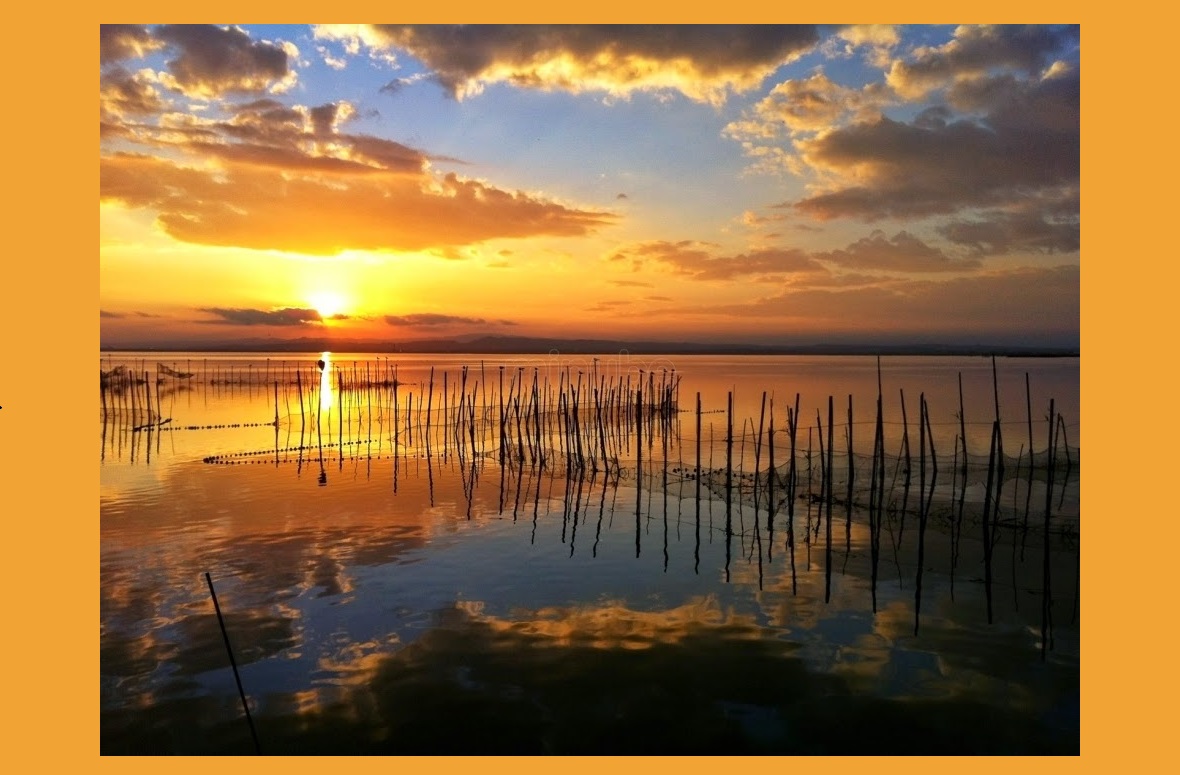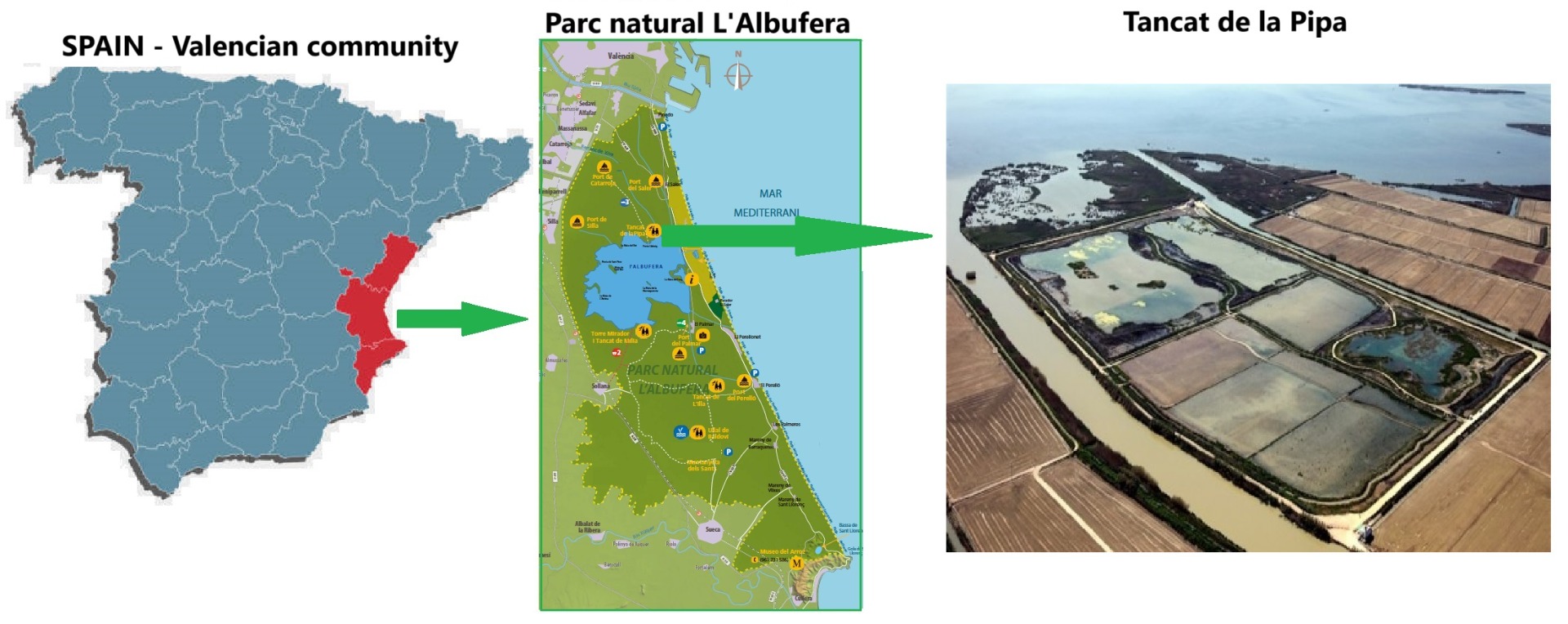
VALENCIA’S TANCAT DE LA PIPA WETLAND
-research project-
VALENCIA'S TANCAT DE LA PIPA WETLAND AS A NATURAL FILTER FOR WATER POLLUTANTS: MICROPLASTIC DYNAMICS AND CONTROL MECHANISMS
Main-author: Ioana Caprar1,
Co-authors: Miguel Martín Monerris, Carmen Hernandez-Crespo, Darío Calzadilla Cabrera2, Calin Baciu1
1Faculty of Environmental Science, Babes-Bolyai University, Cluj-Napoca, Romania
2Research Institute of Water and Environmental Engineering (IIAMA), Polytechnic University of Valencia, Spain
Introduction
Wetlands represent sustainable projects, and play a crucial role in regulating water quality by acting as natural filters for pollutants. They facilitate the removal of contaminants through sedimentation, plant uptake, and microbial degradation. Among emerging pollutants, microplastics pose a significant environmental threat due to their persistence and potential toxicity. Understanding the dynamics of microplastic retention and transformation is essential for optimizing wetland management and enhancing their efficiency in water treatment.
~~~~~~
Objective
This study aims to assess the capacity of Tancat de la Pipa wetland in mitigating microplastic pollution and to evaluate the key mechanisms involved in their removal, including sedimentation, biofilm formation, and plant-root interactions. A case study of Tancat de la Pipa Wetland is presented to illustrate these mechanisms in action.
~~~~~~
Methods
Field sampling and laboratory analysis were conducted across Tancat de la Pipa, a restored wetland within the Albufera de Valencia Natural Park. The vegetation in Tancat de la Pipa consists of a mix of aquatic (like Common reed, Bulrushes, Water lilies, and Hornwort), riparian (Rushes and sedges), and marshland plant species, which support a wide variety of wildlife.
Water samples were analyzed for microplastic presence, from feb 2024 to may 2024. Water samples were collected from 6 points on the surface of the wetland and filtered through 0.425 mm, 0.075 mm and 0.040 mm sieves. The beakers were dried below 70◦C in the oven. Once dried, to eliminate the organic particles, digestion with 30 mL H2O2 30% solution was applied A two-step density separation was performed. The first step was done with 30 mL CaCl2 (1.34 g/cm3) and the second step was done with a higher-density solution of KI (1.72 g/cm3) to ensure that all the high-density microplastics were recovered. The vials containing the density solution were centrifugated (5 min, 3500 rpm) and the supernatant was filtered through glass-fiber filters (pore size of 1 μm and a diameter of 47 mm - VWR Glass Microfiber Filter grade 692).
The retained particles were analyzed using microscopy and Raman spectroscopy to identify and quantify microplastics.
~~~~~~
Results
Findings from Tancat de la Pipa Wetland indicate that it effectively reduces microplastic loads, with retention rates reaching up to 38%. Microplastic particles were predominantly trapped within sediments, while wetland vegetation contributed to their entrapment through root systems and biofilm formation. The integration of sedimentation ponds and vegetated filters in Tancat de la Pipa enhanced the overall retention of microplastics, showcasing the potential of engineered wetlands in pollution control.
~~~~~~
Discussion
The study highlights the efficiency of wetlands, particularly Tancat de la Pipa, in microplastic control and underscores the importance of sedimentation dynamics, plant-microplastic interactions, and microbial communities in determining their effectiveness. The results suggest that wetland restoration and management strategies should prioritize sediment stabilization, plant diversity, and water flow optimization to enhance microplastic removal. Tancat de la Pipa serves as a model system, demonstrating how managed wetlands can be integrated into broader water treatment strategies.
~~~~~~
Conclusion
Wetlands serve as vital ecological buffers, mitigating the impact of microplastic pollution on aquatic ecosystems, a sustainable construction. The case study of Tancat de la Pipa highlights the effectiveness of restored wetlands in pollutant retention, reinforcing their role in water quality improvement, biodiversity conservation, and pollution control. Further research is recommended to refine wetland designs for enhanced microplastic removal efficiency and to explore the long-term fate of retained microplastics.
~~~~~~
Keywords
Environment, pollution, ecosystem, sustainability, wetlands, water quality, microplastics, pollutant removal, sedimentation, pollution, removal efficiency, Tancat de la Pipa.
Ioana Caprar, 27.05.2025
